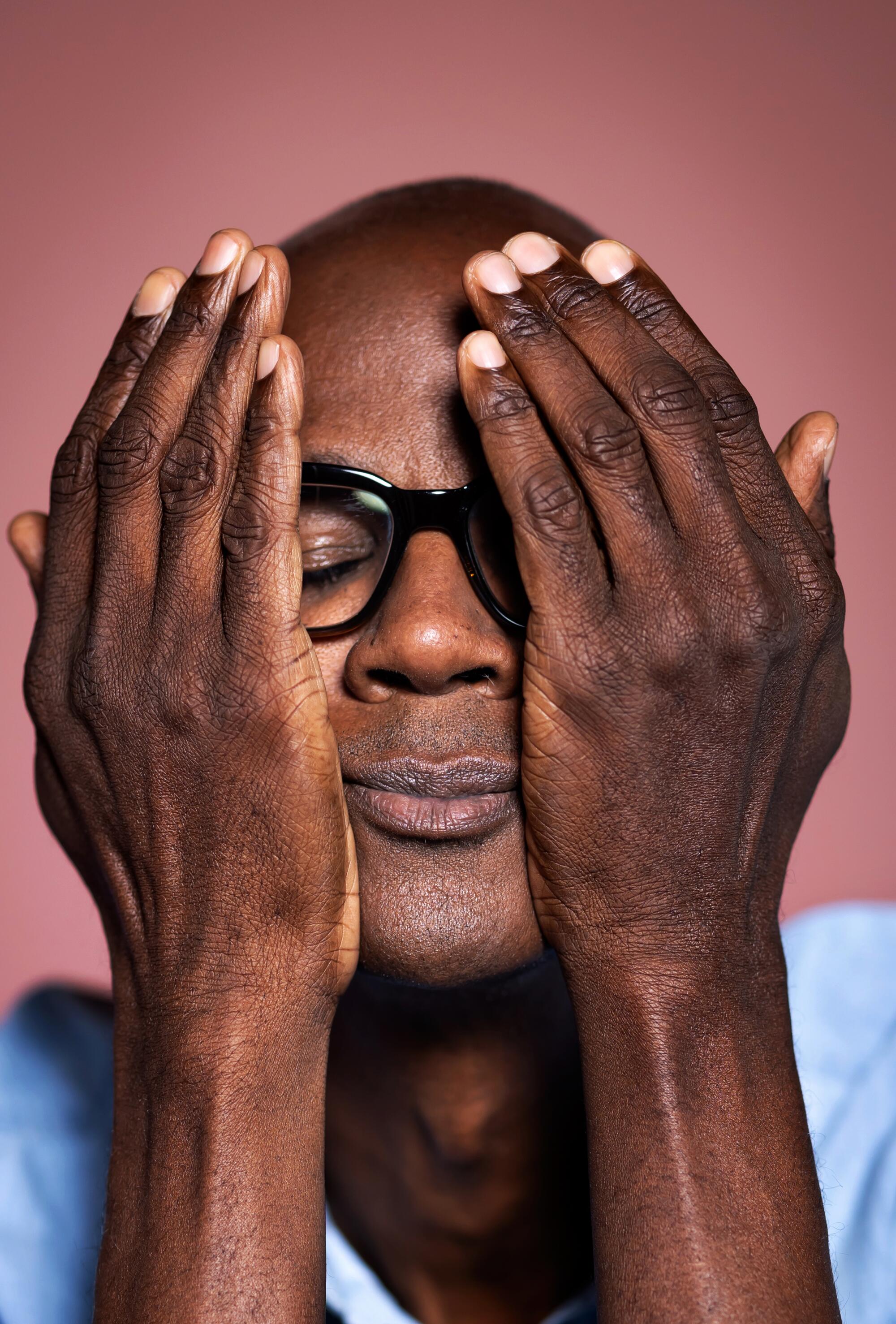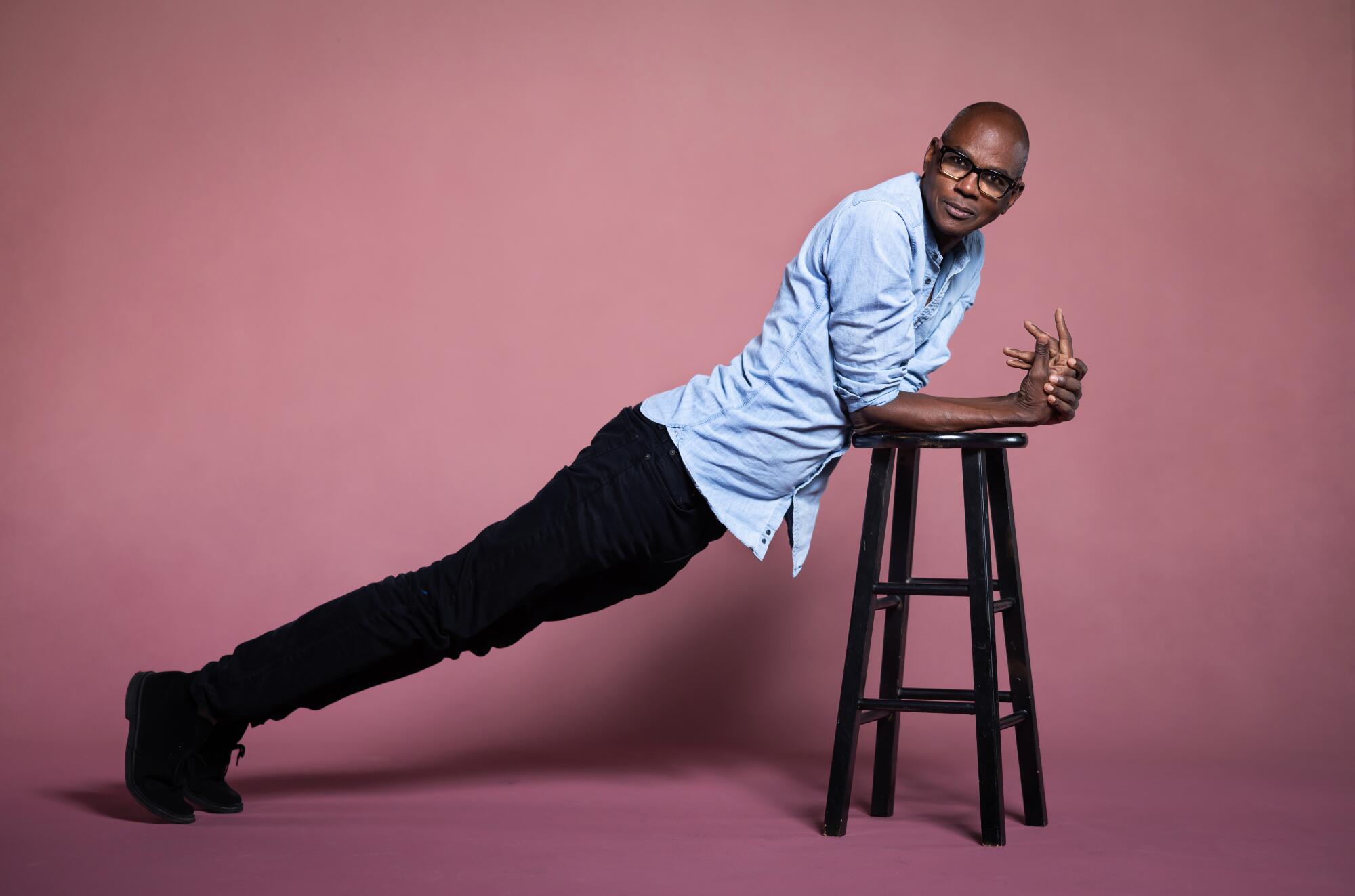
Mark Bradford got a late start as an artist. A former hairstylist, he didn’t begin to work with serious determination until he was 30, when he enrolled as a painting student at CalArts in Valencia. His first exhibition to gain widespread traction waited until he was 40; “Freestyle,” a 2001 group show of American artists proposed the emergence of “post-Black art,” work that inevitably encompassed Black experiences (and, in Bradford’s case, queer experiences as well), but insisted that it not be ghettoized by race or sexuality. Much the same way that Black history is American history, Black art is American art.
Discover the changemakers who are shaping every cultural corner of Los Angeles. L.A. Influential brings you the moguls, politicians, artists and others telling the story of a city constantly in flux.
Now 62, Bradford ranks among the top artists to have emerged in — and defined — American art in the 21st century. Recently he surprised many with a new sculpture, “Death Drop 2023,” a 10-foot man sprawled on the floor, his pose lodged somewhere between a joyful, gay ballroom-culture dance move and a gruesome murder victim. It plays against Bradford’s achievement of having revived dormant abstract painting in a time dominated by figurative imagery.
His sway stems from far more than multimillion-dollar sales in an overheated art market, although a $12-million auction of his monumental canvas “Helter Skelter,” a 34-foot-wide meditation on the race war Charles Manson envisioned starting, is nothing to sneeze at.
Bradford’s U.S. representation at the 2017 Venice Biennale is more to the point. He opened the five-room exhibition with a bulbous, abstract painted sculpture suspended from the ceiling that nearly filled the space. Evoking a bodily tumor, the ugly mass crowded visitors against the walls.

Bradford titled his show “Tomorrow Is Another Day,” the cringey line spoken by Vivien Leigh’s weepy Scarlett O’Hara at the melodramatic close of “Gone With the Wind.” Her remark minimized a brutal history of white supremacy while auguring its endurance. The Oscar-laden romantic fantasy launched a thousand pop culture satires, while Bradford marshaled the gay dialect of camp in defense of moral seriousness.
Building on the found-object aesthetic of L.A. predecessors such as Noah Purifoy, who made assemblages out of the charred remnants of the 1965 Watts riots, Bradford also constructs paintings from canvases densely layered with street signage scavenged from fences, telephone poles and urban walls in South Los Angeles, where he was born and works today. And the MacArthur Fellowship winner, who also won this year’s $500,000 Getty Prize, helped open Art + Practice, an exhibition space in Leimert Park.
Since the start of the Black Lives Matter movement, museums have focused on contemporary art’s presentation of Black figures, but Bradford’s internationally acclaimed work demonstrates the continuing power of abstraction.






